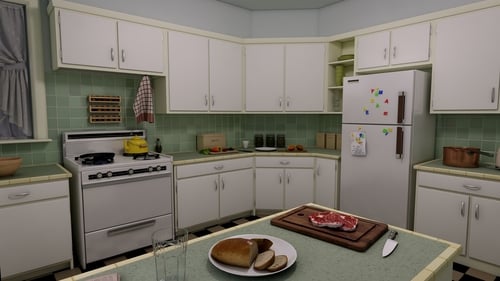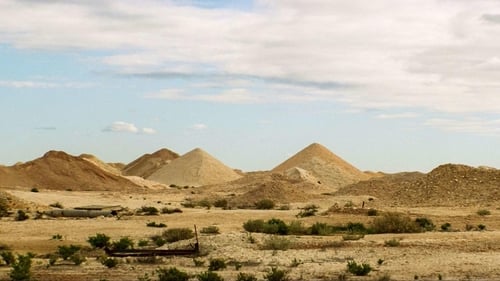
Writer
During the 1980s, claims of satanic ritual abuse ran rife throughout the western world, uncovered by hypnotic therapists and perpetuated throughout the media, including high-rating television talk shows. In Demonic, filmmaker Pia Borg delves into this bizarre chapter of history, examining the elusive line between fact, fiction and the persuasive power of the media.

Producer
During the 1980s, claims of satanic ritual abuse ran rife throughout the western world, uncovered by hypnotic therapists and perpetuated throughout the media, including high-rating television talk shows. In Demonic, filmmaker Pia Borg delves into this bizarre chapter of history, examining the elusive line between fact, fiction and the persuasive power of the media.

Director
During the 1980s, claims of satanic ritual abuse ran rife throughout the western world, uncovered by hypnotic therapists and perpetuated throughout the media, including high-rating television talk shows. In Demonic, filmmaker Pia Borg delves into this bizarre chapter of history, examining the elusive line between fact, fiction and the persuasive power of the media.

Editor
An unseen location scout explores an opal-mining town in South Australia in this sci-fi-laced essay film, which finds in this semideserted region both the traces of indigenous culture and remnants of cinema history

Director
An unseen location scout explores an opal-mining town in South Australia in this sci-fi-laced essay film, which finds in this semideserted region both the traces of indigenous culture and remnants of cinema history

Additional Photography
Abandoned Goods is an essay film exploring the journey of one of Britain’s major collections of Asylum Art containing about 5,500 objects (paintings, drawings, ceramics, sculptures and works on stone, flint and bone) created between 1946 and 1981, by about 140 people compelled to live in the Netherne psychiatric hospital in South London. Blending archive, reconstruction, animation, 35mm rostrum, and observational photography, the film explores the transformation of these objects from clinical material to revered art objects examining the lives of the creators and the changing contexts in which the objects were produced and displayed.

Writer
Abandoned Goods is an essay film exploring the journey of one of Britain’s major collections of Asylum Art containing about 5,500 objects (paintings, drawings, ceramics, sculptures and works on stone, flint and bone) created between 1946 and 1981, by about 140 people compelled to live in the Netherne psychiatric hospital in South London. Blending archive, reconstruction, animation, 35mm rostrum, and observational photography, the film explores the transformation of these objects from clinical material to revered art objects examining the lives of the creators and the changing contexts in which the objects were produced and displayed.

Director
Abandoned Goods is an essay film exploring the journey of one of Britain’s major collections of Asylum Art containing about 5,500 objects (paintings, drawings, ceramics, sculptures and works on stone, flint and bone) created between 1946 and 1981, by about 140 people compelled to live in the Netherne psychiatric hospital in South London. Blending archive, reconstruction, animation, 35mm rostrum, and observational photography, the film explores the transformation of these objects from clinical material to revered art objects examining the lives of the creators and the changing contexts in which the objects were produced and displayed.

Director
Three characters, three perspectives, three directors. A session between a psychiatric, a schizophrenic patient and his mother.

Writer
Crystal World is inspired by J.G Ballard’s apocalyptic science fiction novel of the same name where a viral crystal metamorphoses trees, animals, humans and architecture into frozen jewels forever suspended in time and space. The novel is a haunting portrait of a world in which everything is illuminated by prismatic light, a ‘leaking’ of time that causes humans to experience individual moments endlessly looped, repeated and prolonged. My film adapts this concept of crystallization and applies it to fragments from the 1955 film. I reconstruct scenes from Charles Laughton’s iconic film with underwater puppets, which I then crystallize using ammonium phosphate crystals, time-lapse photography, mirrors, prisms, and projectors. (http://piaborg.com)

Director
Crystal World is inspired by J.G Ballard’s apocalyptic science fiction novel of the same name where a viral crystal metamorphoses trees, animals, humans and architecture into frozen jewels forever suspended in time and space. The novel is a haunting portrait of a world in which everything is illuminated by prismatic light, a ‘leaking’ of time that causes humans to experience individual moments endlessly looped, repeated and prolonged. My film adapts this concept of crystallization and applies it to fragments from the 1955 film. I reconstruct scenes from Charles Laughton’s iconic film with underwater puppets, which I then crystallize using ammonium phosphate crystals, time-lapse photography, mirrors, prisms, and projectors. (http://piaborg.com)

Set Designer
Palimpsest charts the changing lives of the interior of one house over a period of three centuries, a time-frame compressed into ten minutes - portrayed through a combination of time -lapse, real-time, and stop-frame photography. The camera is fixed as the 'space' inside the frame itself transforms, destructs and evolves over the years: historical eras are evoked through references to 17th, 18th and 19th century painting and early 20th century cinema and the human presence in the house is signalled through scenes of everyday labor and domestic duty.

Animation
Palimpsest charts the changing lives of the interior of one house over a period of three centuries, a time-frame compressed into ten minutes - portrayed through a combination of time -lapse, real-time, and stop-frame photography. The camera is fixed as the 'space' inside the frame itself transforms, destructs and evolves over the years: historical eras are evoked through references to 17th, 18th and 19th century painting and early 20th century cinema and the human presence in the house is signalled through scenes of everyday labor and domestic duty.

Director
Palimpsest charts the changing lives of the interior of one house over a period of three centuries, a time-frame compressed into ten minutes - portrayed through a combination of time -lapse, real-time, and stop-frame photography. The camera is fixed as the 'space' inside the frame itself transforms, destructs and evolves over the years: historical eras are evoked through references to 17th, 18th and 19th century painting and early 20th century cinema and the human presence in the house is signalled through scenes of everyday labor and domestic duty.

Writer
Palimpsest charts the changing lives of the interior of one house over a period of three centuries, a time-frame compressed into ten minutes - portrayed through a combination of time -lapse, real-time, and stop-frame photography. The camera is fixed as the 'space' inside the frame itself transforms, destructs and evolves over the years: historical eras are evoked through references to 17th, 18th and 19th century painting and early 20th century cinema and the human presence in the house is signalled through scenes of everyday labor and domestic duty.














